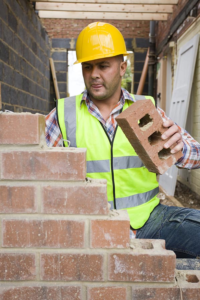Plumbers Clearwater FL are complex, yet surprisingly straightforward. We depend on them for clean, hot water and a functioning waste system. Yet, we often take them for granted — until something goes wrong.
Then we appreciate the ingenious engineering that went into designing a home plumbing system based on the simple laws of gravity and pressure. This article will explore the two main subsystems of a plumbing system: supply and drain, and how fixtures bridge them.

Before it reaches your home plumbing, water has been treated by a municipal water utility company to eliminate microorganisms and other pollutants. It’s then transported to the home via water pipes that carry it into the home and your kitchen sink. However, if these pipes become damaged or contaminated in some way, these pollutants can enter your drinking water.
When the water reaches your home plumbing, it is then distributed to your fixtures and appliances via an entire network of pipes. These pipes are made from copper, brass, plastics, or galvanized iron. The pipes are connected to the water supply line and then to individual faucets with valves. Each fixture has its own intake pipe and can receive either hot or cold water from the main line.
The type of metal used in a home’s water pipes is also a significant factor in the quality of the water itself. Older homes often have pipes that were manufactured with a material like galvanized steel, which can corrode over time and contaminate the water with contaminants such as lead.
The best way to ensure high-quality water is to install an under-counter or whole-house water filtration system. The former will purify your water right before it reaches your sink, while the latter treats the entire household’s water supply. This can prevent impurities from getting into your water and can even help to keep the water temperature in your house more consistent. Water pressure is controlled by a water pressure regulator, which can be adjusted if you find that your home plumbing is under too much pressure or too little.
Your home plumbing is comprised of a series of pipes and valves that transport fresh water from your public main line to every fixture in the house. Generally, these pipes are made of copper, brass or plastics and range in size from 3/4 inches to 4 inches in diameter. They also contain fittings and service valves, which control the flow of water through each pipe. For example, if you have a leaky toilet, you can shut off the flow of water to this fixture by turning the valve clockwise.
City water usually enters your home through a large main line that is typically buried deep enough underground to avoid freezing temperatures. The water is then pumped from this source to a storage tank or tower, where the height of the tank helps create pressure that can move water quickly and efficiently throughout your home plumbing system. Those living in areas without public water systems use private wells to supply their own water supplies, which are typically stored in tanks or cisterns on the property.
Once inside your home, the water flows through the house water supply line, which is then split into hot and cold water supply lines to each faucet and appliance in the house. The hot and cold water supply lines are connected to the water heater, which is responsible for heating or cooling this water before it reaches your fixtures. This process is controlled by your hot and cold water valves, which you can turn off to prevent or limit the amount of water flowing through a specific fixture (for example, a shower head or toilet).
In many cases, these supply lines are not properly sized for their purpose, as different fixtures require varying amounts of water. This can lead to reduced water flow, low water pressure and other issues, such as air hammer. Performing regular maintenance and inspections can help you spot problems like this, and ensure that your plumbing is functioning as intended.
Your home plumbing system relies on a series of drain pipes to take waste and water away from your fixtures. These drainage pipes also need to be vented to prevent negative pressure that could slow or stop drain water flow. Without venting, sewer gases can build up in your plumbing pipes and your home, causing foul odors and other problems. Every drain in your house needs a vent pipe to work properly.
The main plumbing vent pipe is located on your roof, and it’s usually connected to several drains in your home. The vent stack should be one size larger than the drainage pipe it feeds, and it should have a cleanout to clear out debris that accumulates inside the pipe. If you notice used water taking a long time to drain from your sinks, bathtub or shower, it may be a sign that the vent stack is clogged.
If you suspect a clog in your home plumbing vents, call in a plumber to clear the line and inspect the area. If a tree or other debris has blocked the opening of your vent, the plumber will likely need to climb on the roof and remove the obstruction. If your home’s venting is old, the plumber might recommend replacing it to ensure proper airflow for all of your drains.
Another potential cause of a clogged vent is a dry P-trap. Found under sinks and in bathroom shower drains, these U-shaped pipes hold a small amount of water to keep sewer gas from entering your home. If you have a drain that doesn’t get used often, the water in the P-trap can evaporate over time. If the P-trap is completely dry, it’s a good idea to replace it to prevent odor and sewage backup issues.
There are many different styles of vent pipes, and each has its own advantages and disadvantages. Your plumber can explain the options and help you plan your venting system when it’s time to remodel or build a new house. They’ll also help you select the best option for your budget and local plumbing codes.
The water heater is the most important plumbing appliance in the home. It heats incoming cold water for your dishwasher, clothes washer, showers, and sinks. This water is then stored until needed, so that the hot-water plumbing system never runs dry.
Most residential homes use a standard tank-type water heater that holds anywhere from 20 to 80 gallons of hot water. These units live in basements, garages, or utility closets, and are powered by electricity, natural gas, propane, or heating oil. When you turn on a hot-water faucet, the heated water is drawn from the top of the tank through your hot-water supply pipes. When the hot-water tap is turned off, the water level in the tank drops until it’s refilled with fresh cold water from the supply line.
A typical household water heater is a tank-type unit that can handle 20 to 80 gallons of hot water. These units are fueled by electricity, natural gas, propane, or heating oil and are located in garages, basements, or utility closets. Your hot-water supply pipes pull heated water from the top of the tank when you switch on a hot-water faucet. The water level in the tank decreases as soon as the hot-water tap is turned off until it is replenished with cold, fresh water from the supply line.
There are also smaller point-of-use (POU) electric water heaters, typically installed at the fixture where they’re used. These units are much smaller and use very low power to maintain water temperature, allowing them to serve single faucets with relatively low flow rates.
The most popular location for a water heater in a newer home is in the attic. This saves space in the garage or basement and keeps the gas piping and venting out of sight and away from living areas. Unfortunately, this location makes it easy for a homeowner to forget about the water heater and fail to check on its condition on a regular basis. When a tank-style water heater starts to leak, it can quickly overflow the small attic drain pan and ruin floors and furnishings below.


